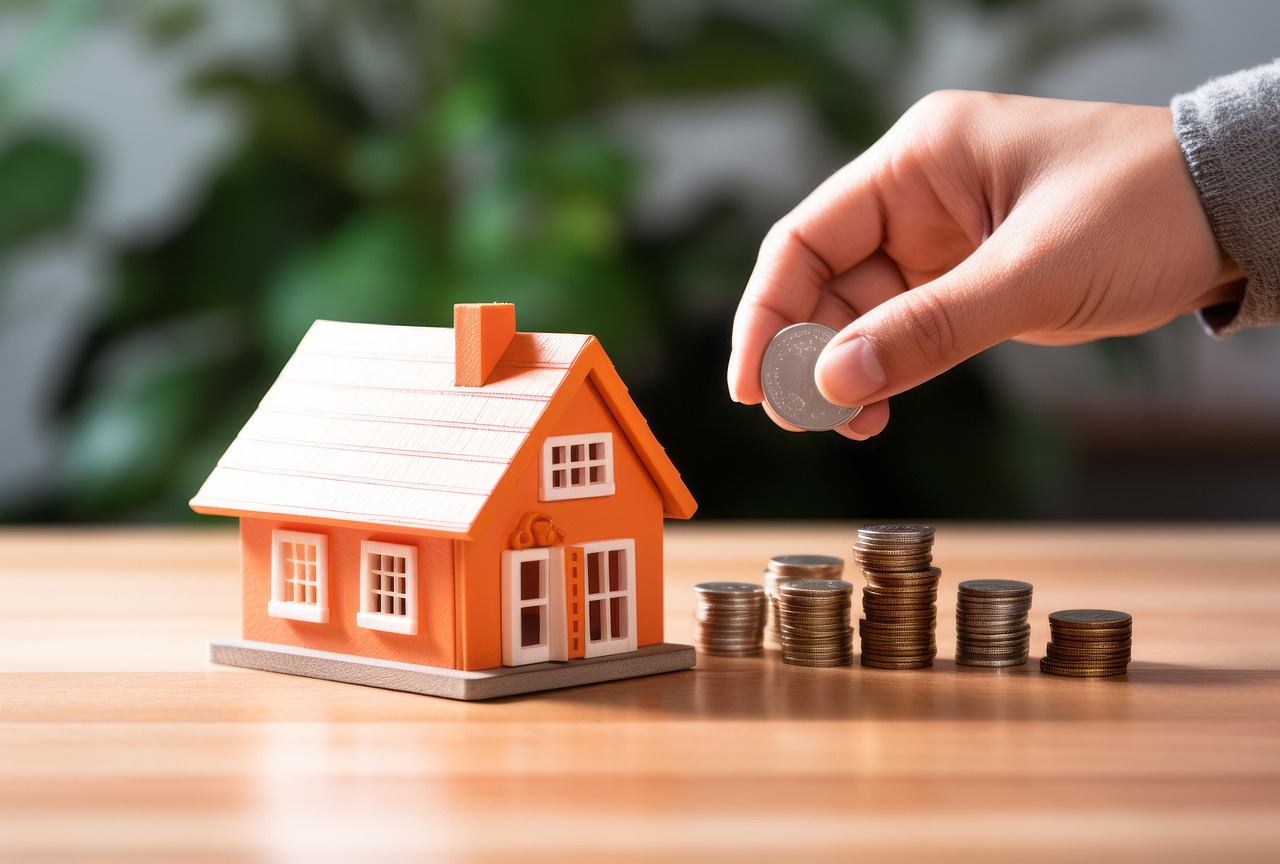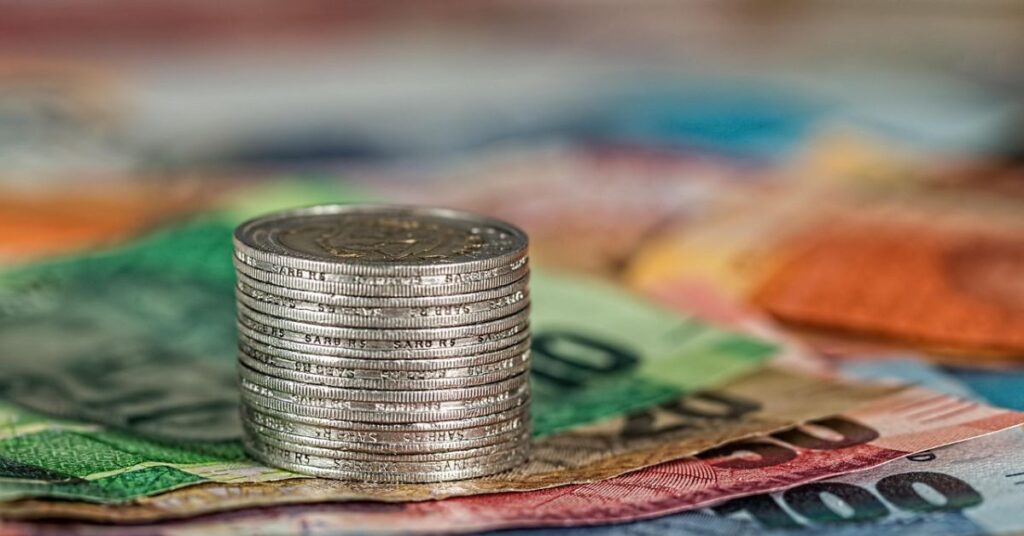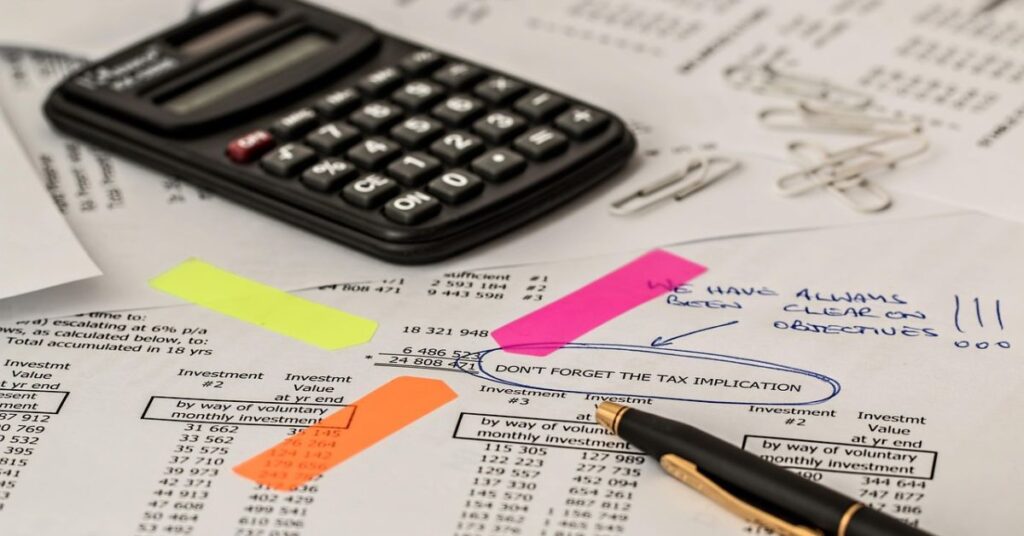So, you’ve got $400K sitting there and you’re wondering what to do with it in Australia. It’s a decent chunk of change, and thinking about how to make it grow over the long haul is smart. We’re not talking about quick wins here; this is about building wealth that lasts. So in this article, we will discuss a few best way to invest 400K in Australia.
Understanding the Best Way to Invest 400K in Australia for Long-Term Growth
When we look at investing for the long term, the magic word is compounding. It’s basically your money making more money, and then that new money starts making money too. The longer you leave it, the more powerful it gets. Think of it like a snowball rolling down a hill – it just keeps getting bigger.
Historically, both property and shares have done pretty well in Australia. Property, especially in the big cities, has seen some serious price jumps over the years. Shares, on the other hand, can offer quicker growth potential because there are fewer limits on how big a company can get. Plus, you can get into the share market with much smaller amounts than you need for a property deposit.
Here’s a quick look at how different investments have performed over the long haul, just to give you an idea:
- Australian Property: Around 7.3% annual return (over 30 years to 2023).
- Australian Shares: Around 9.2% annual return (over 30 years to 2023).
- US Shares: Around 10% annual return (over 30 years to 2023).
These numbers are just a guide, of course. Past performance doesn’t guarantee what will happen in the future, but it does show a general trend.
The key to long-term growth isn’t just picking the ‘best’ asset, but sticking with your plan and letting time do its work. It’s about patience and letting those returns compound year after year, weathering any market ups and downs along the way.
Key Factors to Consider Before Choosing the Best Way to Invest 400K in Australia
Alright, so you’ve got $400K sitting there, and looking for the best way to invest 400K in Australia, then get ready to be put to work. That’s a decent chunk of change, and deciding what to do with it is a pretty big deal. Before you jump headfirst into property or shares, there are a few things you really need to think about. It’s not just about picking the shiny option; it’s about what fits you.
First off, let’s talk about your own situation. How long do you plan to keep this money invested? Are you looking to see it grow over decades, or do you need access to it in, say, five to ten years? This time horizon makes a massive difference. Generally, the longer you can leave your money invested, the more risk you can afford to take on.
Then there’s your comfort level with risk. Some people sleep soundly knowing their money is in property, even if it’s not doing much for a while. Others prefer the ups and downs of the share market, believing it offers better long-term growth. It’s a bit like choosing between a steady, slow-moving river and a faster, more unpredictable one.
Here are some other points to mull over:
- Your Financial Goals: What are you actually trying to achieve? Is it a passive income stream, a big lump sum for retirement, or maybe a deposit for your own home down the track? Your goals will steer your investment choice.
- Liquidity Needs: How easily do you need to be able to turn your investment back into cash? Property can take months to sell, while shares can usually be sold within days.
- Your Knowledge and Interest: Are you keen to learn about individual companies and market trends, or would you rather buy a property and let a property manager handle the day-to-day?
- Upfront Costs: Buying property often involves significant upfront costs like stamp duty, legal fees, and a substantial deposit. Investing in shares can have much lower entry barriers.
Think about what you’re good at and what you enjoy. If you hate dealing with tenants and leaky taps, property might be a headache. If you get stressed by stock market fluctuations, maybe shares aren’t for you. Finding an investment that aligns with your personality and lifestyle is just as important as the potential returns.
Here’s a quick look at how the initial investment might stack up:
| Investment Type | Typical Minimum Investment | Estimated Upfront Costs (Example) |
| Property | $100,000+ (Deposit) | $20,000 – $50,000+ (Stamp Duty, Fees) |
| Shares | $100 | Minimal (Brokerage Fees) |
Property Investment: Why Real Estate Is a Popular Choice for the Best Way to Invest
When thinking about investing $400K in Australia, property often jumps to the front of people’s minds. It’s a tangible asset, something you can see and touch, which offers a sense of security that some other investments just don’t provide. The idea of owning a piece of land, a house, or an apartment that could grow in value over time, and perhaps even generate rental income, is pretty appealing. Many Australians have built significant wealth through property, and stories of grandparents buying homes for a pittance that are now worth millions are common.
Property investment in Australia is particularly attractive due to a few key factors. For starters, the market has historically shown resilience and growth, though this isn’t guaranteed everywhere. You can purchase a property, rent it out to tenants, and then, hopefully, sell it for a profit down the track. This process is straightforward in concept, but success often hinges on careful selection and management.
One of the big draws is the ability to use leverage. Unlike many other investments, you can borrow a substantial amount of money – far more than your initial deposit – to purchase a property. This means that if the property’s value increases, your return on your initial investment can be magnified. For example, using a mortgage allows you to control a much larger asset with a smaller upfront capital outlay. As you pay down the mortgage over the years, you build equity, which can then be used to acquire more properties, steadily growing your portfolio.
While property can feel like a solid, reliable investment, it’s important to remember that it’s not without its risks. Location is everything, and a poorly chosen property in a stagnant market might not perform as expected. Plus, you’re often tying up a large sum of money in a single asset, which means if that one asset falters, your entire investment takes a hit.
Here are some common aspects of property investment:
- Capital Growth: The hope that the property’s value will increase over time, leading to a profit when you eventually sell.
- Rental Yield: The income generated from renting out the property to tenants. This can help cover ongoing costs like mortgage repayments and maintenance.
- Gearing: The strategy of borrowing money to invest. Negative gearing, where expenses exceed income, can offer tax benefits by offsetting losses against other income.
- Tangibility: The physical nature of real estate provides a sense of ownership and control that can be reassuring for investors.
While the potential for capital gains is a major driver, it’s also worth noting that rental income alone might not always cover all the costs associated with owning an investment property. This is where careful financial planning and understanding of yields versus expenses become really important.

Share Market Opportunities: Exploring Stocks as the Best Way to Invest 400K in Australia
When you’ve got $400,000 to invest in Australia, the share market presents a really accessible path for growth. Unlike property, which often demands a hefty deposit, getting into shares is much simpler. You can start trading with relatively small amounts, sometimes as little as $100, through various investment apps. The main cost you’ll encounter is brokerage fees, which are usually a small percentage of your transaction.
Historically, the Australian share market has shown it can deliver solid returns over the long haul. While there are always ups and downs, like the recent fluctuations on the ASX 200, looking at longer timeframes reveals a different story. Imagine investing just $400 back in 1900 – by today’s standards, adjusted for inflation, it would be worth a substantial $400,000. That’s despite major market crashes along the way.
Here’s a quick look at how Australian shares have performed compared to property over the last couple of decades:
| Asset Class | Average Annual Return (approx.) |
| Australian Property | 7.3% |
| Australian Shares | 9.2% |
| US Shares | 10.0% |
Note: Past performance is not a guarantee of future results.
One of the biggest advantages of shares is their liquidity. If you need cash, you can sell your shares quickly, often within a couple of days, and you can sell just a portion of your holdings. This is a stark contrast to property, which can take months to sell, and you can’t just sell off a room.
Diversification is also much easier with shares. With $400K, you can spread your investment across many different companies and industries. This helps manage risk, as you’re not putting all your eggs in one basket. Trying to diversify with property would likely mean owning multiple properties, which is a much bigger undertaking, especially for newer investors.
The power of compounding in the share market is significant. When you reinvest dividends, your money starts earning returns on top of your initial investment, and then those returns start earning their own returns. Over many years, this can dramatically boost your overall portfolio growth.
While shares can be more volatile than property in the short term, their potential for higher long-term growth and ease of access make them a compelling option for investing $400K in Australia.
Comparing Property vs. Shares to Find the Best Way to Invest Australia
Deciding between property and shares for your $400K investment is a big call, and honestly, there’s no single ‘right’ answer that fits everyone. Both have their own quirks and potential rewards, and what works for your mate might not be the best fit for you. It really boils down to what you’re trying to achieve and how you like to manage your money.
Think of it like this: property is a physical thing you can see and touch. You buy a house, a unit, or maybe even a shop, rent it out, and hopefully, its value goes up over time. Shares, on the other hand, are like owning a tiny piece of a company. You buy them through a stock exchange, and their value can change based on how the company and the wider economy are doing. You get dividends, which are like a share of the company’s profits.
Here’s a quick rundown of how they stack up:
- Property:
- Shares:
When you’re comparing, consider these points:
- Liquidity: How quickly can you get your hands on your money if you need it? Shares are generally much more liquid than property.
- Control: How much say do you have in how your investment performs? With property, you can make decisions about renovations or tenants. With shares, you’re more of a passive owner.
- Income vs. Growth: Are you looking for regular income (like rent) or long-term capital growth (the value of the asset increasing)? Both can offer both, but often lean one way or the other.
The choice between property and shares isn’t just about which one is ‘better’ in general. It’s about which one aligns with your personal financial situation, your comfort level with risk, and how much time and effort you’re willing to put in. For many, a mix of both can be the most sensible approach.
Ultimately, understanding these differences helps you figure out which path, or perhaps a combination of paths, is the best way to invest your $400K in Australia for the long haul.
Risk and Return Analysis: Finding a Balanced Strategy for the Best Way to Invest 400K in Australia
When you’re looking at where to put $400K, thinking about the ups and downs is pretty important. It’s not just about how much you might make, but also how much you could lose, and how quickly you can get your money back if you need it.
Property, for instance, is often seen as a safer bet because it’s a physical thing you can see and touch. However, it’s not exactly easy to sell a house overnight if you suddenly need cash. This lack of ‘liquidity’ means you might have to wait a while, or even accept a lower price, to sell quickly. On the other hand, shares can swing up and down much faster. One day, your investment could be worth a lot, and the next, it could drop significantly, especially if there’s big news in the market. But, selling shares is usually pretty straightforward – you can often do it within a few business days.
Here’s a quick look at how they generally stack up:
- Property:
- Generally less volatile day-to-day, but can have significant drops over longer periods.
- Low liquidity – selling can take months.
- Requires a large chunk of capital upfront (deposit).
- Potential for steady rental income alongside capital growth.
- Shares:
- Can be highly volatile, with potential for rapid gains and losses.
- High liquidity – easy to buy and sell.
- Lower entry cost, allowing for smaller initial investments.
- Returns can come from dividends and capital growth.
The key is finding a balance that suits your personal comfort level with risk and your need for access to your money. It’s rarely an ‘all or nothing’ situation; many people find success by mixing both property and shares in their investment portfolio. This way, you’re not putting all your eggs in one basket, which can help smooth out the bumps.
Historically, Australian shares have often provided higher average returns over the long haul compared to property, even with market crashes along the way. For example, while property might give you a steady 7-8% return annually, shares have the potential to deliver more, say 9-10% or even higher, though this comes with more risk. It’s a trade-off: more potential reward often means more potential risk. Thinking about your own financial situation and how long you plan to invest for will help you decide which mix is right for you.
Tax Benefits and Costs to Weigh in the Best Way to Invest 400K in Australia
When you’re looking at the best way to invest 400K in Australia, thinking about the tax implications and associated costs is pretty important. It’s not just about the potential returns; it’s also about what you get to keep after the ATO has had its say.
For property investors, negative gearing is often a big drawcard. This is where the costs of owning an investment property, like loan interest and maintenance, are more than the rent you receive. You can then claim this difference as a deduction against your other income, which can lower your overall tax bill. It’s a bit like getting a discount on your tax for holding onto the property. However, as interest rates fluctuate or you pay down your loan, the amount you can claim might change. Remember, there are also upfront costs like stamp duty and ongoing expenses such as council rates and property management fees to factor in.
On the share market side of things, franking credits are a key benefit. These credits are attached to dividends paid by Australian companies and essentially reduce the tax you pay on that dividend income, avoiding double taxation. It’s a nice little bonus that can add up, especially if you’re receiving regular dividends. However, it’s worth keeping an eye on any potential changes to the franking credit system. Investing in shares also involves brokerage fees when you buy or sell, and potentially fees for managed funds or ETFs. While generally lower than property entry costs, these still need to be accounted for.
Here’s a quick look at some common costs:
- Property: Stamp duty, legal fees, agent fees, council rates, water rates, property management fees, maintenance, repairs, insurance, and loan interest.
- Shares: Brokerage fees, management fees (for ETFs/managed funds), potential advice fees, and loan interest (if using margin loans).
It’s easy to get caught up in the potential growth of an investment, but overlooking the tax and cost side can really eat into your net returns. Understanding these elements upfront helps you make a more informed decision about which investment aligns best with your financial situation and long-term goals.
When considering property, it’s wise to look into how you can maximise your deductions. Resources are available to help investors understand claiming expenses like repairs and depreciation, which can significantly impact your taxable income. Maximising tax deductions for your investment properties can make a real difference to your bottom line.

Expert Tips for Diversifying the Best Way to Invest 400K in Australia for Maximum Returns
So, you’ve got $400K to invest in Australia and you’re looking to spread it around to get the best bang for your buck. That’s a smart move. Relying on just one type of investment, whether it’s property or shares, can be a bit risky. Diversification is key to smoothing out the ups and downs and hopefully getting better returns over the long haul.
Think of it like this: you wouldn’t put all your eggs in one basket, right? The same applies to your money. By splitting your investment between different asset classes, you can reduce the impact if one area takes a hit. For instance, while property might be doing its thing, the share market could be having a rough patch, or vice versa. Having both means one can potentially cushion the blow if the other isn’t performing so well.
Here are a few ways to think about diversifying your $400K:
- Mix Property and Shares: This is the classic approach. You could put a portion into a residential or commercial property and the rest into a diversified share portfolio. This gives you exposure to both tangible assets and the growth potential of companies. Remember, you can even add property to your superannuation for added diversification.
- Within Shares: Don’t just buy one or two stocks. Spread your share investment across different industries and company sizes. Consider Australian shares, international shares, and perhaps even some exchange-traded funds (ETFs) that track broad market indexes. This way, if one sector struggles, others might be thriving.
- Consider Other Assets: Depending on your risk tolerance, you might look at other options like bonds, infrastructure, or even alternative investments. These can offer different return profiles and risk levels, further diversifying your portfolio.
It’s also worth thinking about how you reinvest any income generated. With shares, reinvesting dividends can significantly boost your returns over time through compounding. Property income, while useful, doesn’t typically have the same compounding effect unless you’re actively reinvesting it into property improvements or further purchases.
Diversification isn’t just about owning different things; it’s about owning things that behave differently under various economic conditions. This helps to reduce overall portfolio volatility and can lead to more consistent growth over the long term.
When you’re looking at shares, remember that franking credits on Australian stocks can provide a tax advantage, reducing the tax you pay on dividends. This is something property investments don’t offer. So, while property might have benefits like negative gearing, shares can offer different kinds of financial advantages. Balancing these different aspects is part of building a robust investment strategy.
Thinking about investing $400K in Australia? It’s a big step, and you want to make sure your money works hard for you. We’ve put together some easy-to-understand tips to help you grow your cash the smart way. Discover how to make your investment work best for you. Visit our website today for all the details!
Frequently Asked Questions
What’s the main difference between investing in property and shares?
Think of it like this: property is a physical thing you can touch, like a house. Shares are like owning a tiny piece of a company. Property is usually a big, single purchase, while shares can be bought in small amounts. Property needs ongoing care and can be hard to sell quickly, whereas shares are easier to buy and sell and don’t need personal upkeep.
Is it easier to start investing in property or shares?
Generally, shares are easier to start with. You can buy shares for as little as $100 with some apps, and the main extra cost is a small fee for buying or selling. For property, you usually need a much larger deposit, often around 20% of the property’s price, which can be tens of thousands of dollars.
Which one usually makes more money over a long time?
Historically, both have grown a lot over many years. However, shares have sometimes shown a slightly higher average return compared to property. This is because shares can grow without the same limits as property, and they have lower costs to get started and sell.
What are the risks involved with each type of investment?
Property is less likely to have big price swings day-to-day, but if you choose the wrong property or area, you could lose money. Shares can go up and down in value more quickly, which can be worrying, but they also offer more ways to spread your money around to reduce risk.
Are there tax benefits for investing in property or shares in Australia?
Yes, both can have tax advantages. For property, you might be able to claim back some costs against your income if the rental income doesn’t cover all your expenses (this is called negative gearing). For shares, you can get tax credits called franking credits on dividends from Australian companies, which can reduce your tax bill.
Can I invest $400K in both property and shares?
Absolutely! A smart way to invest is not to put all your money into just one thing. You could use some of your $400K for a property deposit and invest the rest in shares, or vice versa. Spreading your money across different types of investments can help manage risk and potentially boost your overall returns.











